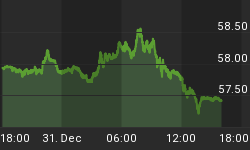Today's negative stock market reaction to the weak jobs data shows that the "bad news is good news market," which has ruled for the past couple of years, may have finally become a "bad news is bad news market." With the June non-farms payroll data rising by only 121,000, verses an expected gain of over 200,000, it appears that Wall Street is finally acknowledging that the reality that stagflation trumps, or potentially negates, the potential for a Fed pause. If that is indeed the case, things are about to get a lot worse for stocks.
The stagflation alarm rang louder due to an increase in wages paid of .5%, 65% above the .3% that analysts had been forecasting, against a backdrop of record high oil prices, which approached $76 per barrel for the first time ever before pulling back. Once again, employment in the service sector, including banks and retailers, contributed the lion's share of the gains, rising by 75,000, while government payrolls swelled by 31,000. In what is sure to be the just the tip of the iceberg, construction lost 4,000 jobs, while on the bright side the beleaguered manufacturing sector managed to add 15,000 jobs. The unemployment rate, adjusted of course for the millions of discouraged workers who have simply given up looking, held steady at 4.6%.
However, the big question is will these payroll gains, however tepid, last? Given that national employment is overwhelmingly dependent on service sector jobs, which in turn are dependent on discretionary consumer spending, the prognosis is bleak. With oil prices on track to reach $100 per barrel (sending pump prices above $4 per gallon), the Fed likely to raise interest rates a few more times (further pushing up mortgage payments and rents), the continuing upward pressure on health care, insurance and local taxes, and the prospect of rising food prices, discretionary spending is likely to collapse in the years ahead.
Even more important than the ability of Americans to borrow and consume, is the willingness of foreigners to produce and lend. With the endurance of the former and the tolerance of the latter both likely to be tested soon, today's job gains will likely become tomorrow's job losses.
Evidence that foreigners' patience is beginning to wear thin was seen in the sharp and broad decline in the dollar, especially against the Asian currencies, which are issued by America's largest creditors. If this trend continues, it will not be long until dollar weakness spills over into the bond market and consumer goods, putting additional upward pressure on both interest rates and consumer prices, while simultaneously exerting downward pressure on employment and the economy. This two-pronged effect will combine to cause the federal budget deficit to swell just as rising interest rates make it increasingly more expensive to fund. Get ready for the Democrats to break out Ronald Reagan's Misery Index, only this time it's the Republican majority that will have to deal with it.
Don't wait the misery to fully set in. Protect your wealth and preserve you purchasing power before it's too late. Discover the best way to buy gold at www.goldyoucanfold.com, download my free research report on the powerful case for investing in foreign equities available at www.researchreportone.com, and subscribe to my free, on-line investment newsletter at http://www.europac.net/newsletter/newsletter.asp.
















